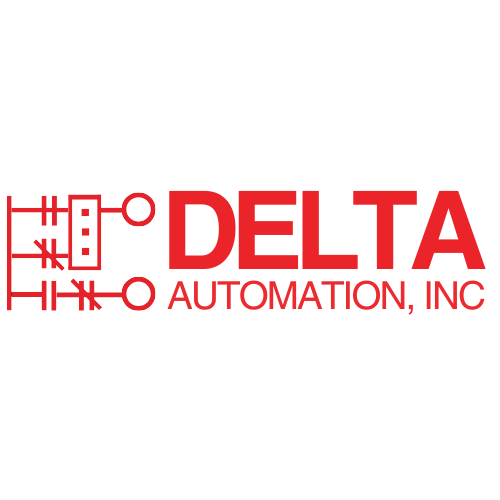Repair or Replace? How to Choose the Fastest Recovery Path for Drive Failures in 2026

When a drive fails, the core question isn’t “Should we repair or replace?” It’s simpler:
Which option will restore production the fastest without creating bigger risks later?
Sometimes replacement is the quickest path. Sometimes on-site troubleshooting solves the issue before a full repair is even needed. Other times, a bench repair is faster than sourcing a unit — especially when lead times are uncertain.
A reliable decision doesn’t defend one choice. It matches the fastest, lowest-risk recovery path based on what actually failed.
Here’s how to make that call with confidence.
1) Start with Availability: Can a Replacement Arrive Before the Line Needs to Run?
Uptime decisions begin with one practical question:
Is a compatible replacement drive physically available right now?
If a suitable unit is on the shelf and can be installed immediately, replacement may beat even the fastest repair or on-site service. But if the alternative requires waiting — whether hours or weeks — repair or field troubleshooting becomes the faster path by default.
Replacement may be fastest when:
- A functionally equivalent unit is already in inventory
- Commissioning is simple (standard parameters, no proprietary firmware)
- Integration work is predictable and low-risk
Repair or Field Service may be faster when:
- Replacement units are backordered or obsolete
- Lead time is longer than a repair or service call
- Configuration, tuning, or networking changes could delay installation
Uptime is driven by real availability, not theory.
2) Apply the 50% Rule: Compare Repair Cost to Replacement Cost
A practical benchmark used widely for drive systems, motors, and other industrial assets:
If a repair is likely to cost more than ~50% of a replacement, replacement becomes the safer long-term option.
This threshold protects against investing heavily in units with deeper damage or nearing end-of-life.
Typical Savings Below the 50% Threshold
When the failure is localized — whether in cooling systems, power electronics, or control circuits — repairs often fall in the range of 30–50% of the price of a new unit. In some cases, the cost can be lower still, especially when:
- Only a single component group is affected
- No major OEM assembly needs replacement
- No re-commissioning is required after service
Why Savings Don’t Override the 50% Rule
Even if a unit can be repaired, once repair costs approach or exceed half the cost of new hardware, replacement offers clearer lifecycle value — particularly when failures hint at broader electrical, thermal, or environmental stress.
Savings matter most when they don’t compromise future reliability.
3) Identify the Scope of the Failure: Localized or Systemic?
Repair is most efficient when a failure is localized to specific components. Replacement is stronger when failure suggests system-level risk or widespread damage.
Repair or Field Service are favorable when:
- The drive powers on but trips under load
- Fault codes trace to individual components, such as:
- IGBT stage failures
- DC bus capacitor degradation
- Cooling fan lock
- Sensor, relay, or gate driver faults
- Environmental stress (heat, dust, vibration) is the likely cause
Replacement is favorable when:
- Damage is broad or catastrophic, including:
- Burnt PCBs from short circuits
- Flooding, lightning, or arc flash exposure
- Multiple power boards failing simultaneously
- System-level issues increase ongoing risk, such as:
- Grounding noise
- Motor insulation failure
- Unstable power quality
In these situations, replacing the drive may save time twice: once to restore uptime today, and again by reducing the likelihood of repeat failures.
4) Use On-Site Service vs. In-Shop Repair Strategically
Whether the work happens in the plant or on a bench should be decided by where the right tools are available fastest.
On-Site Service can be faster when:
- Wiring, sensors, or grounding issues could be the root cause
- The drive is difficult to remove or part of a large system
- Live testing is required to diagnose intermittent faults
In-Shop Repair can be faster when:
- Diagnostics require full test stands or load simulation
- Component-level inspection or calibration is needed
- Multiple internal parts must be tested or replaced
Field technicians uncover issues tied to the environment.
Bench technicians solve issues that require precision testing.
The location of service isn’t the decision — the tools are.
5) Quick Assessment Checklist for Engineers
Use this to choose the fastest recovery path:
🔧 Start Here:
1) Is a compatible replacement available today?
- Yes → Consider replacement, then assess commissioning time (#2)
- No → Evaluate repair or field service options (#3–4)
2) Will installation require tuning, programming, or integration changes?
- Yes → Repair/field service may avoid delays
- No → Replacement may be fastest
3) Does the failure appear localized (single board, relay, capacitor, or IGBT group)?
- Yes → Repair typically remains below the 50% cost threshold
4) Does the failure appear systemic (multiple boards, flooding, arc flash, motor issues)?
- Yes → Replacement reduces repeat downtime risk
5) Will repair or replacement exceed ~50% of replacement cost?
- Yes → Replacement becomes the smarter investment
If multiple answers are uncertain, move to a diagnostic evaluation — once the failure mechanism is identified, the decision is often obvious.
Final Step: Treat the Decision as a Diagnostic, Not a Purchase
Choosing between repair, replacement, or field service is not a commercial decision — it’s a technical one. The right path is simply the one that:
- Restores uptime fastest
- Stays below the 50% cost threshold
- Doesn’t create ongoing risk
- Avoids delays from sourcing or integration
Starting with a technical evaluation turns a stressful failure into a straightforward decision based on facts instead of assumptions.
